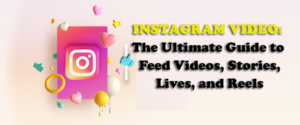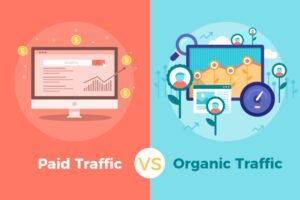With Facebook’s marketing strategy brands and businesses are provided with an opportunity for maximum visibility, Facebook still reigns as one of the most widely used online platforms by adults. And the vast majority are using it daily, Over 20% of the world’s population is on Facebook. That’s a huge percentage.
Facebook has grown into a venue for businesses to market themselves through interaction with customers and self-promotion.
However, you’re going to need an excellent Facebook marketing strategy if you want your business to stand out among the 50 million businesses on Facebook!
Whether you’re a big corporation or small local biz, Facebook is a powerful marketing tool – it’s a great space to keep customers informed, develop brand identity, and broaden your reach.
Table of Contents
1. Set goals for Facebook
The first step to any marketing strategy is setting the right goals. This roadmap will be an essential reference to measure against to make sure your Facebook strategy is successful. But to set goals, you’ll first want to do a little research to ensure your plan is attainable through the platform.
We found that marketers on Facebook had a few top goals in mind:
- 34% wanted to increase brand awareness
- 21% wanted to increase community engagement
- 11% wanted to increase sales and lead generation

If you don’t have Facebook goals of your own yet, these survey results are a great place to start. Additionally, if your company has already set general goals, look for how these overlap with your own plans for marketing on Facebook.
2. Know your Facebook audience
Facebook marketing is useless if you aren’t reaching the right people. That’s why getting the right target audience is so important!
Understanding who is on Facebook and what your current audience breakdown looks like will be important in determining which Facebook marketing strategies you should employ and how.
Whether your target audience consists of grandmas, gamers, or graphic designers, odds are, they’re on Facebook. You just have to know how to find them.
So where do you start? If you have a basic idea of who your target audience is, you can start building an audience in Facebook Ads Manager.
Once you’ve studied up on that, spend some time getting familiar with your own Facebook demographics using Facebook Page Insights.
3. Engage proactively with your audience
Like most social media channels, they’re built as networks to converse, discuss and share content. As a brand, you can’t forget that basic idea of what makes a social media network. That means conversation and engagement should never be put on the back burner.
Instead, try to be a community for your audience. Facebook is a great place to hold industry chats or discussions, whether it’s with a different audience or your own customers.
You can help drive Facebook engagement by asking people to simply engage in the first place. However, you can’t sit back and wait for your followers to interact. You can’t reach everyone, but there are ways to increase engagement.
4. Schedule your Facebook content
Content creation and curation are important components to any social media strategy. On Facebook, you have many more choices on the types of posts you can use. This ranges from Stories to status to Group posts.
With the selection of options comes the specific types of content your audience is interested in, which should also be kept in mind while evaluating the techniques for marketing on Facebook that will work best for you.
5. Determine your Facebook ads strategy
Whether you’re just starting out on Facebook or you’ve been on it for a while, it’s difficult to escape the need to pay for brand exposure. Growing your audience and brand loyalty doesn’t happen overnight. You have to earn it.
But there is one shortcut to get there a bit faster–”social media advertising“. Specifically, on Facebook, there are more than four million advertisers with just an average click-through rate of 9%. Advertising on Facebook is simpler, but not easier. You still have to effectively build your brand and showcase it perfectly with ads.
Aim for Higher Brand Awareness
You Facebook ad campaigns should always be focused on two things:
- Cost-Effective
- Relevant
For starters, you want to stay within your allocated weekly or monthly spend with Facebook to avoid over exposure and useless clicks. Ad spend can shoot up in a hurry when you’re targeting isn’t effective or set appropriately, which brings us to the next step.
Your Facebook ad has to be relevant. Targeting a broad audience isn’t a bad thing. At first, you want to actually see what works best to build awareness. However, relevance is crucial toward great Facebook ads.
Try to build custom audiences and address customers who would best fit your Facebook content. If it’s a retargeting measure, make sure the content provides something recognizable but also something new.
Decide on Creative Content
Some of the best aspects of your ad content should include:
- Identity: Does it relate to your brand and effectively showcase your product/service? Are your logo and business colours correctly displayed?
- Reward: What do viewers get out of it? Is it a deal, promotion, offer code, whitepaper or industry guide?
- Action: Your content must drive an action, which goes back to your Facebook goals. A clear and precise call to action is best.
Keep Facebook Ad Content Fresh
Facebook ad content is literally squeezed between your friends and family feed, which means it’s seen often. Have you ever deemed a TV commercial the worst ever and seen it replayed endlessly through your favourite show? This is the same thing.
Don’t let your content get stale with viewers, so make sure to update and repurpose your ad content every week or two. The whole purpose is to drive users to a specific site or purchasing page. So don’t let old content ruin your Facebook retargeting or remarketing efforts.
6. A/B Split Test
Now that your Facebook marketing strategy has gone into effect, you have to continually optimize everything.
The key to an effective Facebook marketing strategy is A/B split testing.
This is when you compare small variations of a strategy to figure out which aspects work the best.
Through your testing, you can track which days and times are best for you to post, what types of content resonate best with your audience, which ads are most effective, and more.
Facebook provides plenty of useful metrics for A/B split testing to help you easily optimize your Facebook marketing strategy.
To access Facebook insights, simply click onto your Facebook page and click “Insights” on the top bar, right next to “Notifications.”
Facebook Ads Manager will provide you with statistics on cost per click, click-through rate, total ad reach, and more!
Conclusion
With these six steps in hand, you can begin plotting your Facebook marketing strategy today. Anything we missed? Comment below with steps you’ve taken to find success on Facebook!




